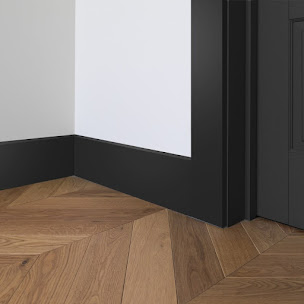Rubber Seal Strips for Marine and Boat Applications
Protection and durability are paramount when it concerns boats and marine settings. All components must be made to survive extreme weather conditions because they are constantly exposed to moisture, salt, humidity, and other environmental factors. A crucial but sometimes disregarded element in this context is the Rubber Seal Strip. In order to ensure performance, comfort, and safety, these seals are used in many boat parts and maritime applications.
Rubber Seal Strips
Made from premium rubber compounds, rubber seal strips are pliable, weatherproof barriers. To stop water, air, dirt, and vibration from leaking in, they are made especially to seal seams, edges, and gaps. These strips are frequently utilized over hatches, windows, doors, and engine chambers in boat and maritime applications. Their major purpose is to create an airtight and watertight seal, which keeps boats safe and effective even under trying circumstances.
Rubber Seal Strips' Significance in Marine Environments
It is impossible to overestimate the significance of good sealing in maritime environments. Boats are constantly exposed to UV radiation, salt spray, and water, all of which over time can harm them. Water could leak into important places without adequate sealing, causing mold growth, corrosion, and internal damage. As the initial line of defense, rubber seal strips serve to:
- Prevent water leaks: They keep water out of storage areas, cabins and other compartments by sealing joints and gaps.
- Prevent salt corrosion: Rubber materials of marine quality withstand deterioration from seawater, prolonging the boat's life.
- Improve comfort: Rubber seals make the ride calmer and more comfortable by lowering vibration and noise.
- Boost safety: Appropriate sealing keeps vital spaces, such engine compartments, dry and operational.
Rubber Types for Marine Seal Strips
Certain types of rubber are not appropriate for use in maritime settings. Since the material must withstand severe temperatures, water, and UV radiation, selection is essential. Typical kinds include of:
- EPDM Rubber: One of the most widely used materials for maritime Rubber Strips is EPDM, which has exceptional resistance to weathering, ozone, and UV radiation. It resists absorbing water and works effectively in both hot and cold conditions.
- Rubber made of Neoprene: Neoprene is frequently utilized in locations where fuel or lubricant contact is anticipated due to its well-known resistance to chemicals and oil.
- Silicone Rubber: Provides exceptional pliability over a broad temperature range and resists weathering and ageing, although it is less resilient to abrasion.
- Nitrile Rubber (NBR): Better suited for locations that may come into proximity to fuels and oils, but less resilient to extended UV exposure than EPDM.
Common Uses for Ships and Boats
Rubber strips are adaptable and used in many different nautical applications, including:
- Portholes and hatches: Water leaks into suites and storage spaces are stopped by seals.
- Doors and Windows: These reduce noise and rattling while offering waterproof and airtight protection. Seal strips improve safety in engine compartments by containing emissions and preventing water penetration.
- Storage units and deck fittings: Rubber seals keep tools and personal items dry.
- Electrical Enclosures: Prevent corrosion and moisture damage to delicate electronics.
Keeping Marine Rubber Seal Strips in Good Condition
Rubber seal strips, like any other boat part, need to be properly maintained to last a long time. Inspection on a regular basis is crucial. Due to UV rays and salt, seals may eventually get harder, shatter, or lose their flexibility. To keep them in good condition:
- Use a rubber conditioner or protector to keep the material flexible
- Clean frequently with mild soap and water to get rid of salt and debris
- If a seal exhibits wear, cracks, or deformity, replace it
Boats should be carefully stored during off-seasons to prevent environmental harm.
Concluding Remarks
Despite being little parts, Rubber Strips UK has a big influence on boat and marine performance. They safeguard against water penetration, minimize vibration and noise, and extend the life of important equipment. To keep boats safe, comfortable, and seaworthy, it's essential to select the correct kind of seal, maintain it correctly, and replace it when needed. Purchasing premium rubber seal strips is a wise investment that will pay you in the long term, regardless of whether you own a boat, work in the marine industry, or are just an enthusiast.




Comments
Post a Comment